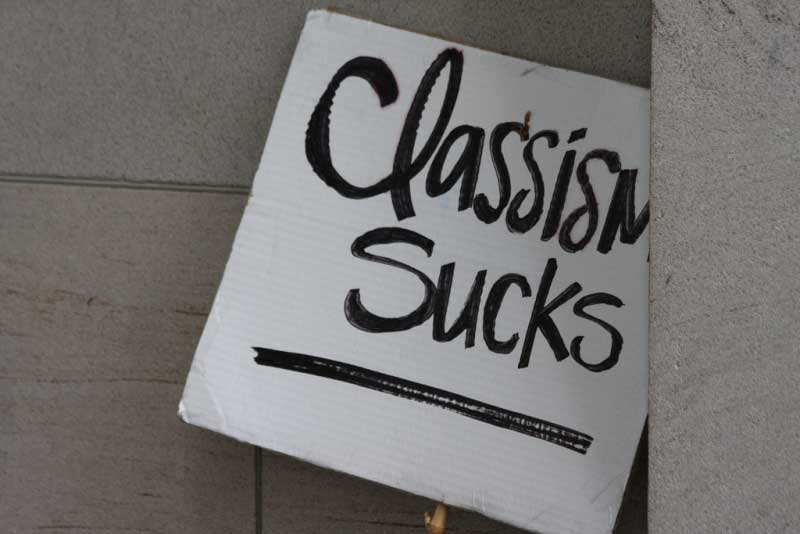Classism
Welcome! In this bulletin, we will be discussing the topic of Classism. You’ll be able to find sections including definitions involving classism, history, videos, articles/handouts, statistics, and questions to ponder.
DEFINITIONS
Class: Relative social rank in terms of income, wealth, education, occupational status and/or power.
Classism: The institutional, cultural and individual set of practices and beliefs that assign differential value to people according to their socioeconomic class; and an economic system that creates excessive inequality and causes basic human needs to go unmet.
Status: Social status can be understood as the degree of honor or prestige attached to one’s position in society.
Ruling Class: The stratum of people who hold positions of power in major institutions of the society.
Owning Class/Rich: The stratum of families who own income-producing assets sufficient to make paid employment unnecessary.
Upper-Middle Class: The portion of the middle class with higher incomes due to professional jobs and/or investment income.
Middle Class: The stratum of families for whom breadwinners’ higher education and/ or specialized skills brings higher income and more security than working class people have.
Lower-Middle Class: The portion of the middle class with lower and less stable incomes due to lower-skilled or unstable employment.
Working Class: The stratum of families whose income depends on hourly wages for labor, or on other non-managerial work or very small business activity that doesn’t require higher education.
Poverty Class: The stratum of families with incomes persistently insufficient to meet basic human needs.
Cultural Capital: The forms of knowledge, skill, education, any advantages a person has that give her or him a higher status in society.
Social Capital: Resources based on group membership, relationships, networks of influence and support.
Internalized Classism: Acceptance and justification of classism by working-class and poor people, such as feelings of inferiority to higher-class people, hostility and blame toward other working-class or poor people, and beliefs that classist institutions/policies are fair are all examples of internalized subordination. Feelings of superiority to people lower on the class spectrum than oneself, a sense of entitlement, rationalizations of classist policies and institutions on the part of middle class and people on the upper end of the class spectrum are examples of internalized domination. Both internalized subordination and internalized dominance are manifestations of internalized classism.
Class Privilege: One of the many tangible or intangible unearned advantages of higher-class status, such as personal contacts with employers, good childhood health care, inherited money, speaking the same dialect and accent as people with institutional power.
Definitions were provided from Teaching for Diversity and Social Justice
Edited by Maurianne Adams, Lee Anne Bell, Pat Griffin, © Teaching for Diversity and Social Justice,
Second Edition, Routledge, 2007
